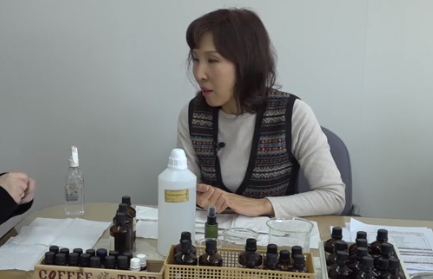<P>In this study, <I>Ecklonia cava</I> alginate (ECA) was used as a base material for biodegradable films. Calcium chloride (CaCl<SUB>2</SUB>) was used as a cross-linking agent, and various concentrations (0%, 0.4%, 0.7%,...
http://chineseinput.net/에서 pinyin(병음)방식으로 중국어를 변환할 수 있습니다.
변환된 중국어를 복사하여 사용하시면 됩니다.
- 中文 을 입력하시려면 zhongwen을 입력하시고 space를누르시면됩니다.
- 北京 을 입력하시려면 beijing을 입력하시고 space를 누르시면 됩니다.
https://www.riss.kr/link?id=A107457579
- 저자
- 발행기관
- 학술지명
- 권호사항
-
발행연도
2018
-
작성언어
-
- 주제어
-
등재정보
SCOPUS,SCIE
-
자료형태
학술저널
-
수록면
3545
- 제공처
-
0
상세조회 -
0
다운로드
부가정보
다국어 초록 (Multilingual Abstract)
<P>In this study, <I>Ecklonia cava</I> alginate (ECA) was used as a base material for biodegradable films. Calcium chloride (CaCl<SUB>2</SUB>) was used as a cross-linking agent, and various concentrations (0%, 0.4%, 0.7%, and 1.0%) of cinnamon leaf oil (CLO) or cinnamon bark oil (CBO) were incorporated to prepare active films. The ECA film containing 3% CaCl<SUB>2</SUB> had a tensile strength (TS) of 17.82 MPa and an elongation at break (E) of 10.36%, which were higher than those of the film without CaCl<SUB>2</SUB>. As the content of essential oils (EOs) increased, TS decreased and E increased. Addition of CLO or CBO also provided antioxidant and antimicrobial activities to the ECA films. The antioxidant activity of the ECA film with CBO was higher than that of the film containing CLO. In particular, the scavenging activities of the 2,2-diphenyl-1-picrylhydrazyl (DPPH) and 2,2′-azino-bis (3-ethylbenzothiazoline-6-sulphonic acid) (ABTS) radicals in the ECA film containing 1% CBO were 50.45% and 99.37%, respectively. In contrast, the antimicrobial activities against <I>Escherichia coli</I> O157:H7, <I>Salmonella</I> Typhimurium, <I>Staphylococcus aureus</I>, and <I>Listeria monocytogenes</I> were superior in the ECA films with CLO. These results suggest that ECA films containing CLO or CBO can be applied as new active packaging materials.</P>
동일학술지(권/호) 다른 논문
-
Roles of Tristetraprolin in Tumorigenesis
- MDPI
- Park, Jeong-Min
- 2018
- SCOPUS,SCIE
-
- MDPI
- Lee, Ji-Eun
- 2018
- SCOPUS,SCIE
-
- MDPI
- Choi, Hyun-Jung
- 2018
- SCOPUS,SCIE
-
- MDPI
- Kang, Min Cheol
- 2018
- SCOPUS,SCIE






 ScienceON
ScienceON



